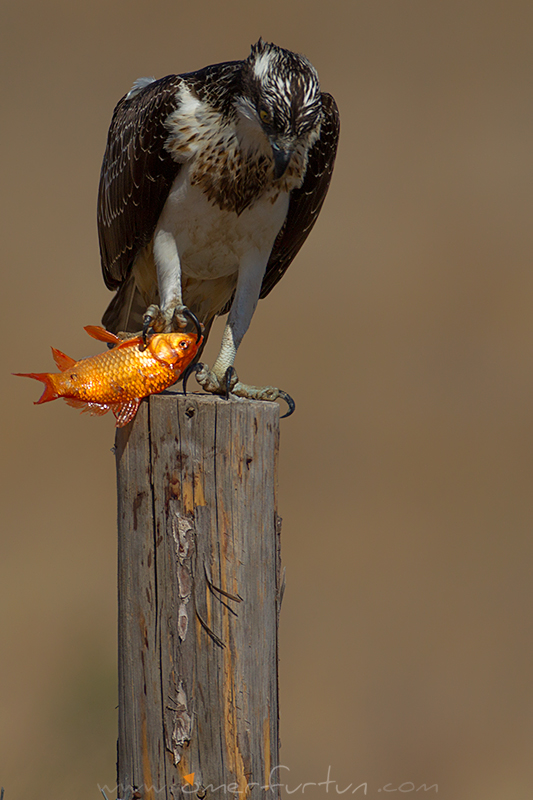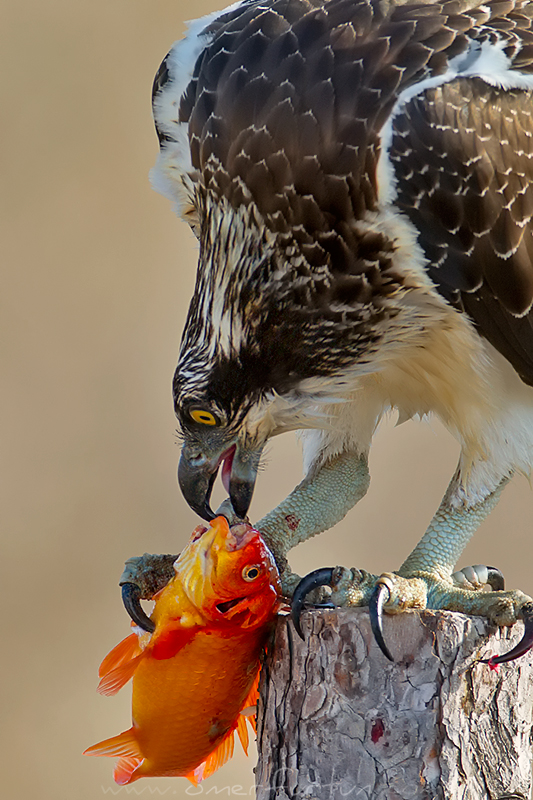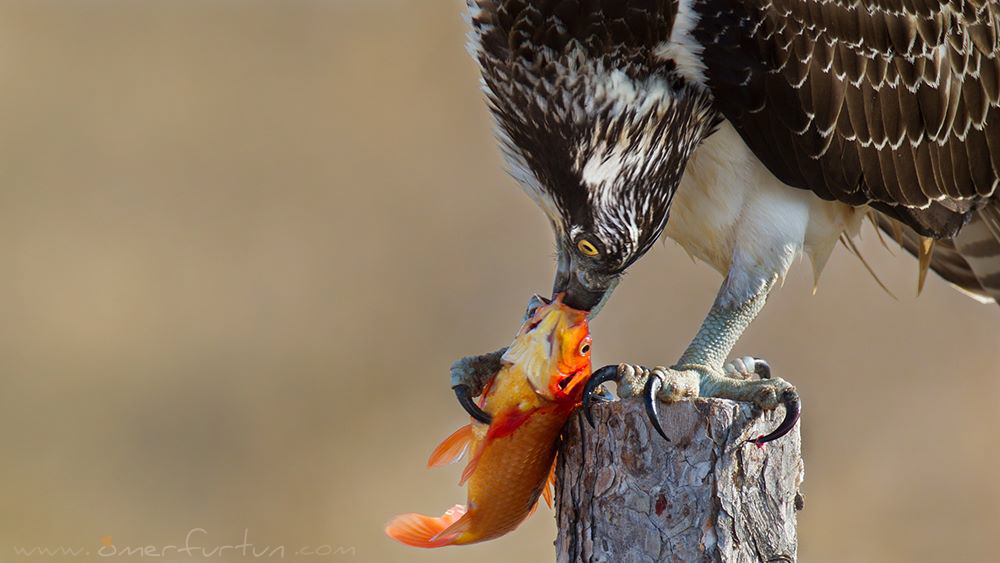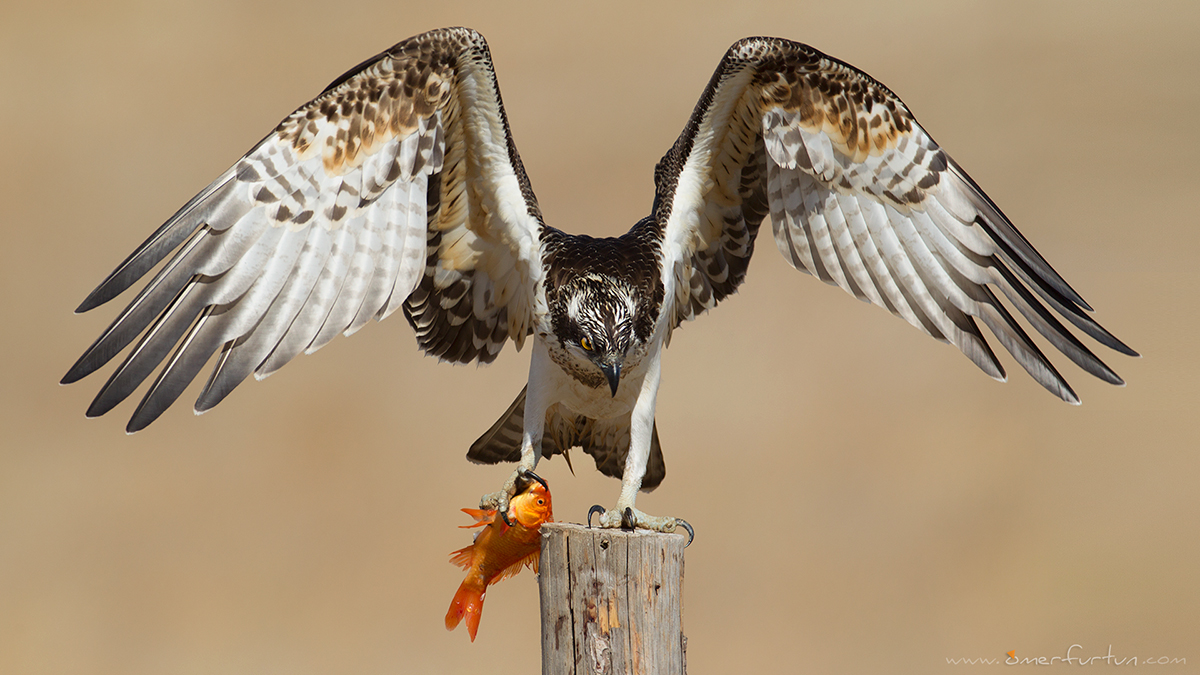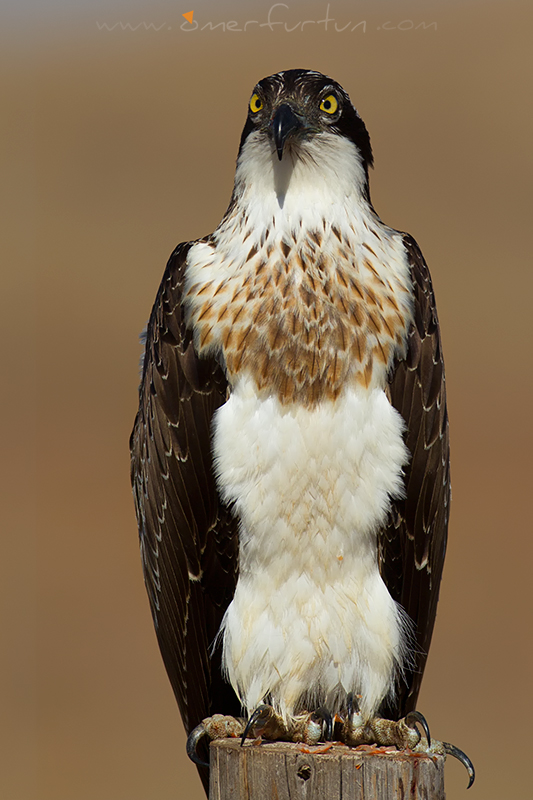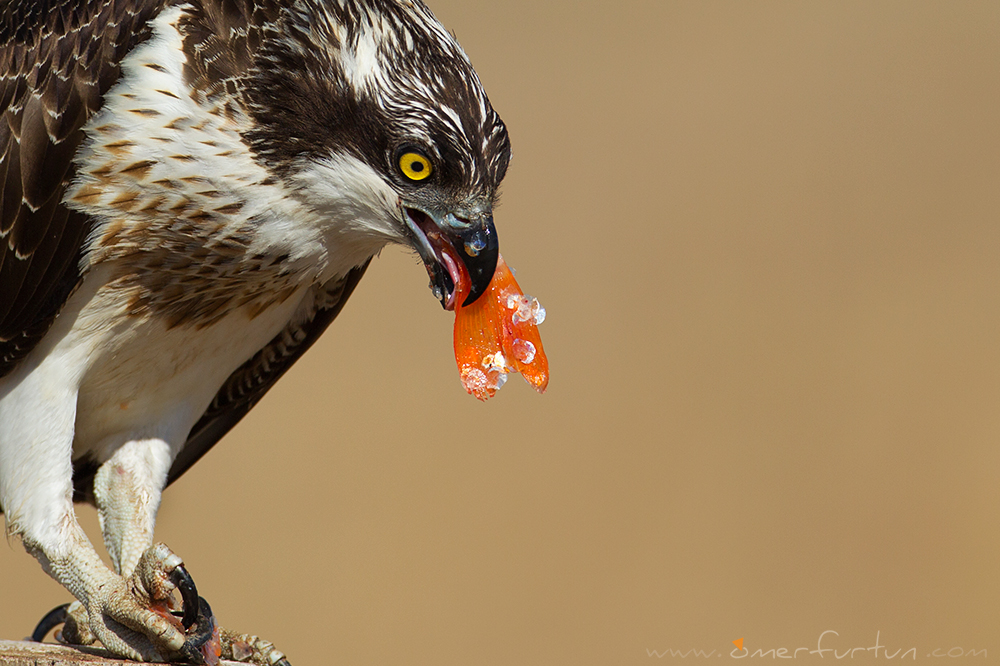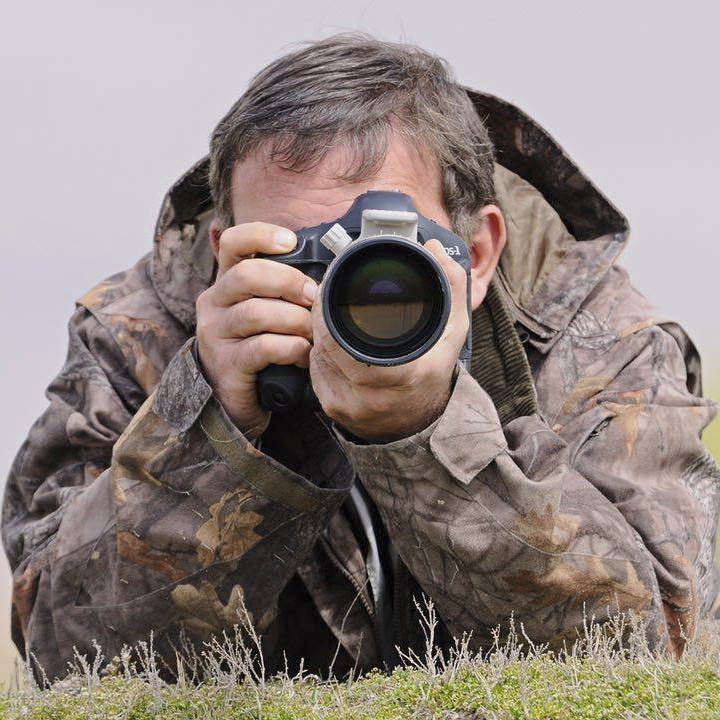Osprey
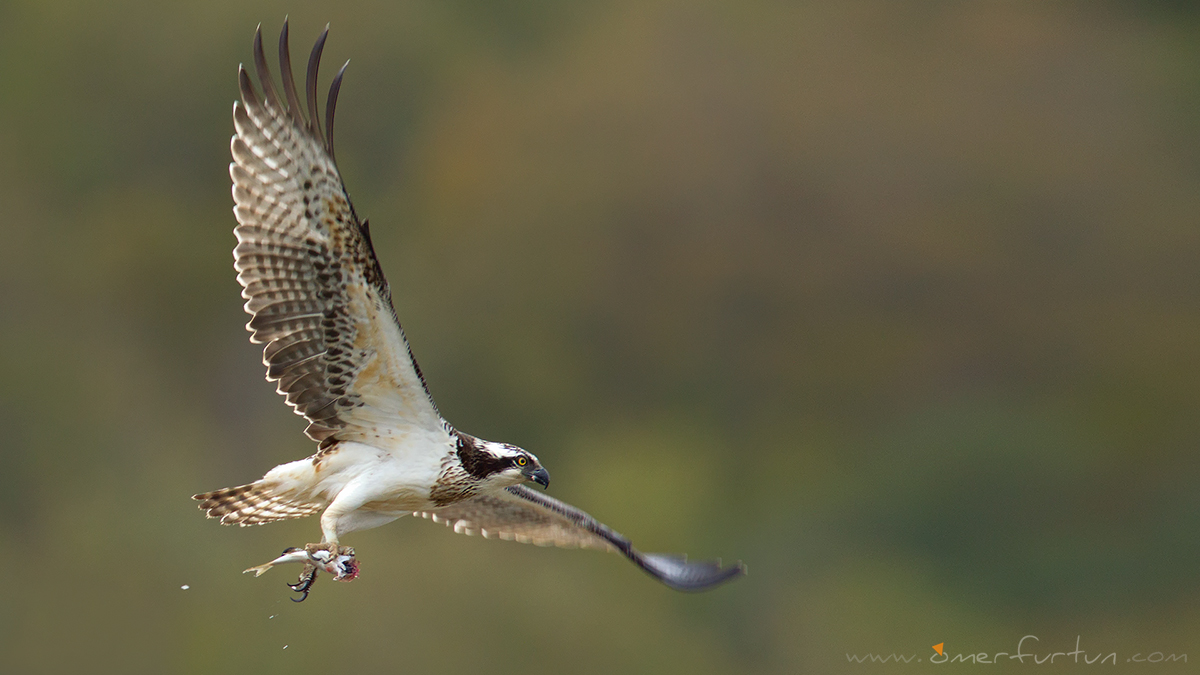
The hunting scene of an Osprey is highly valuable for bird photographers. Being in the right place, especially at the moment it dives for a fish and then rises from the water with its catch, is a dream for all wildlife photographers.
Since Ospreys visit our lakes and seas only briefly during migration seasons to feed and replenish their energy, encountering "that scene" in our country is mostly a matter of luck. However, in the countries where they choose to breed, they hunt for extended periods, allowing their hunting habits to be observed. This, in turn, increases the chances of being in the right place at the right time.
The season when Ospreys visit Kozanlı, Gök Lake. Along with my field companions, Serkan Mutan and Ömer Kulaçoğlu, we head toward Kozanlı to try our luck for that scene. As we arrive at the lake, a familiar car approaches us. Two fellow photographers, Zafer Tekin and Kürşat Akın, who enjoy fieldwork as much as we do, welcome us.
They keep it brief— the Osprey is there, and this team has already studied and determined its boundaries and where we need to be. Within minutes, all of us, except Zafer Tekin, are pressing our shutters just 8-10 meters away from an Osprey savoring its prey on a fence post. Zafer Tekin, however, has placed his equipment in the back seat and is instead making an effort to ensure that his guest, Kürşat Akın, and the rest of us capture even better shots.
Even though our search for the dream dive scene is unsuccessful, we still get to watch and photograph a natural wonder feeding for minutes, thanks to Zafer’s “served on a silver platter” kind of setup. We take photos, and soak in the beauty before us.
Unfortunately, the same mindset that sees nature as nothing more than a place for barbecues or blasting music by the river—the same people who think their masculinity is measured by how many dead birds they can line up on their car hood—has left its mark on Düden Lake’s fish population. The fish that should be in the lake are nearly nonexistent. Some genius apparently decided it would be a great idea to introduce invasive ornamental fish.
The ever-accommodating osprey, though occasionally seen with a carp, must have thought, “Oh, the photographers are here—let’s add some color to the scene!” and proudly posed with its flashy catch. We can’t help but indulge in the spoiled thought, "Wouldn’t it be nice to capture an Osprey with a big, majestic carp?"
Konya, Kulu - 2012
The osprey soars over Gök Lake, scanning the water for signs of fish activity. Focused on the perfect moment, it locks eyes on its target. The dive begins. As it nears the surface, its talons extend forward— coffff...
With its catch firmly gripped, the osprey rises from the churning water. Wings at full power, it ascends, shaking off droplets as it flies toward its favorite perch—the pole where it feasts on its prey. Another successful hunt.
BOOM.
The gunshot echoes across the lake.
With its prey still clutched in its talons, the osprey glides downward from the pole. But this time, its wings are out of control. Its lifeless body collapses at the base of the perch.
Throughout their migration, birds are already far more cautious in Turkey compared to the countries where they prefer to breed. And moments like this prove why. The osprey shot dead in Kulu, Konya, in 2012, serves as yet another grim confirmation of their fears.
The so-called "hunter" responsible was identified thanks to the relentless efforts of bird photographers and was fined 6,000 TL. But does that change anything? Will birds reconsider their instincts about this country? Doubtful. Nor should they. Because there are too many of these gun-toting, sick-minded excuses for men.
Fly thousands of kilometers to survive, stop for a quick meal to regain strength for the journey ahead—only to become a target for the twisted satisfaction of some lunatic with a shotgun.
To the creature that shot the osprey:
May you forever feel the crushing grip of an eagle’s talons on your groin.



